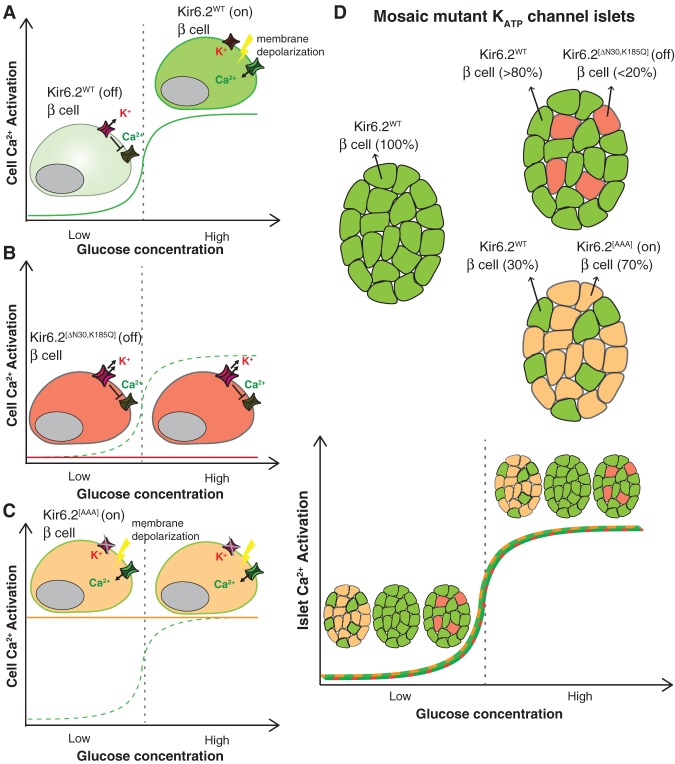Figure 3.
Effects of cellular heterogeneity in expression of KATP channel mutants on islet Ca2+ activation. (A) Dissociated β cells expressing wild-type KATP channel subunit Kir6.2 (Kir6.2WT) should be inactive in Ca2+ signaling at low glucose but active at high glucose (green curve). (B) In contrast, β cells expressing Kir6.2[ΔN30,K185Q] are inexcitable; they are resistant to depolarization and Ca2+ activation from increases in ATP resulting from increased metabolism in high glucose (red line). (C) β Cells expressing mutant Kir6.2[AAA] can be depolarized independently of glucose metabolism and are constitutively active (yellow line) even under low-glucose conditions compared with wild-type cells (green dashed curve). (D) Despite the glucose-independent behaviors of individual β cells expressing mutant Kir6.2, multicellular islets containing 70% β cells expressing constitutively active Kir6.2[AAA] (green and yellow curve) or up to 20% β cells expressing inactive Kir6.2[ΔN30,K185Q] (red and green curve) respond to low and high glucose similar to islets containing 100% Kir6.2WT β cells (green curve). Mosaic islets maintain glucose responsiveness largely due to cell–cell gap junction coupling. The figure was adapted and created by us from data from Rocheleau et al. (2006), Benninger et al. (2011), and Hraha et al. (2014).

